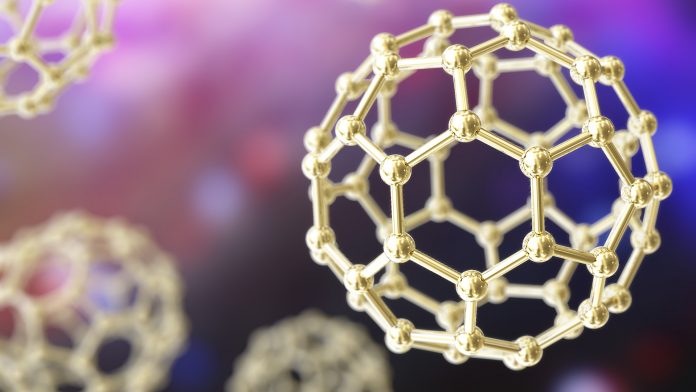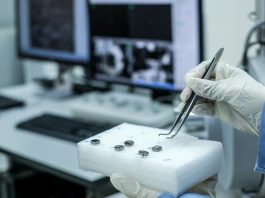Researchers at Korea Advanced Institute of Science and Technology (KAIST) have studied the 3D atomic structure of the atoms in a nanoparticle.
Atoms form the basis of all materials, so in order to tailor functional properties, it is necessary to precisely determine their atomic structures. Researchers at KAIST have been observing the 3D atomic structure of nanoparticles at an atomic level through neural network-assisted atomic electron tomography.
The research team, led by Professor Yongsoo Yang, utilised a platinum nanoparticle as a model system to show that an atomicity-based method of deep learning can consistently recognise the 3D surface atomic structure with an accuracy of 15 picometers (which is equivalent to around 1/3 of a hydrogen atom’s radius).
The examination on atomic displacement, strain, and facet indicated that the surface atomic structure and strain are linked to both the shape of the nanoparticle and the particle-substrate interface.
The group believe that paired with quantum mechanical calculations, like density functional theory, the ability to accurately detect surface atomic structures will be crucial to comprehend catalytic performance and oxidation effect.
Professor Yang explained: “We solved the problem of determining the 3D surface atomic structure of nanomaterials in a reliable manner. It has been difficult to accurately measure the surface atomic structures due to the ‘missing wedge problem’ in electron tomography, which arises from geometrical limitations, allowing only part of a full tomographic angular range to be measured. We resolved the problem using a deep learning-based approach.”
The missing wedge problem leads to elongation and ringing artifacts, which negatively impacts the precision of the atomic structure determined from the tomogram, particularly in distinguishing the surface structures. This problem has been the central obstruction in the accurate identification of the 3D surface atomic structures of nanomaterials.
The researchers utilised atomic electron tomography (AET), which is a high-resolution CT scan for nanomaterials using transmission electron microscopes. AET enables individual atom level 3D atomic structural determination.
“The main idea behind this deep learning-based approach is atomicity — the fact that all matter is composed of atoms. This means that true atomic resolution electron tomogram should only contain sharp 3D atomic potentials convolved with the electron beam profile,” commented Yang.
“A deep neural network can be trained using simulated tomograms that suffer from missing wedges as inputs, and the ground truth 3D atomic volumes as targets. The trained deep learning network effectively augments the imperfect tomograms and removes the artifacts resulting from the missing wedge problem.”
Through the application of deep learning-based augmentation, the accuracy of 3D atomic structure can be heightened by almost 70%. As well as this, the accuracy of surface atom determination was also heightened substantially.
Structure-property relationships of functional nanomaterials, particularly those that heavily depend on the surface structures, like catalytic properties for fuel-cell applications, can now be identified at one of the most essential scales: the atomic scale.
“We would like to fully map out the 3D atomic structure with higher precision and better elemental specificity. And not being limited to atomic structures, we aim to measure the physical, chemical, and functional properties of nanomaterials at the 3D atomic scale by further advancing electron tomography techniques,” Yang added.









